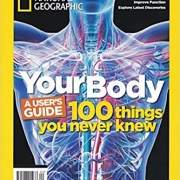How Will They Experience Your Blog Post?
At a recent Drive Indy event, executive coach Ellen Dunnigan emphasized the mantra “Intentionality is the hallmark of influence”. Keeping in mind the formula P+A=MA (purpose + Audience = My Actions), before entering a room or beginning an encounter, you must predict, Dunnigan advises, how they are likely to react to your presence. Your presence includes the way you look, the way you carry yourself, the words you choose. How do you intend for the person or people you will face to experience their encounter with you?
Always ask yourself, Dunnigan urges, what the single most important point (of the meeting, the encounter, the speech) will be. Translated into content creation, that very concept is expressed as “The Power of One”. Each blog post should have a razor-sharp focus on just one story, one idea, one aspect of your business, we teach at Say It For You. Focused on one thing, your post has greater impact, since people are bombarded with many messages each day. The Power of One also means targeting one audience per blog post. The more focused a blog is on connecting with a narrowly defined target audience, the more successful it will be in converting prospects to clients and customers.
In dealing with an employee whose dress or manner of speaking with customers needs changing, a member of the Drive Indy audience asked Dunnigan, how can I best approach that encounter? Again, intentionality is the saving force, was the speaker’s answer. In preparing for the meeting, focus on the “single most important point”, predicting how the employee is likely to experience the encounter.
“Executive presence” means showing up – at the head of a room or on a web page, as confident and competent, respecting your audience while “predicting” their response to the information or advice you’re providing. “It’s your rant, but it’s all about them,” as I stressed in my last Say It For You post. People generally don’t like to have their assertions and assumptions challenged, even if they respect your expertise and have a need for your products and your guidance.
How will your readers experience the blog post you’re preparing to publish?







Follow us online!